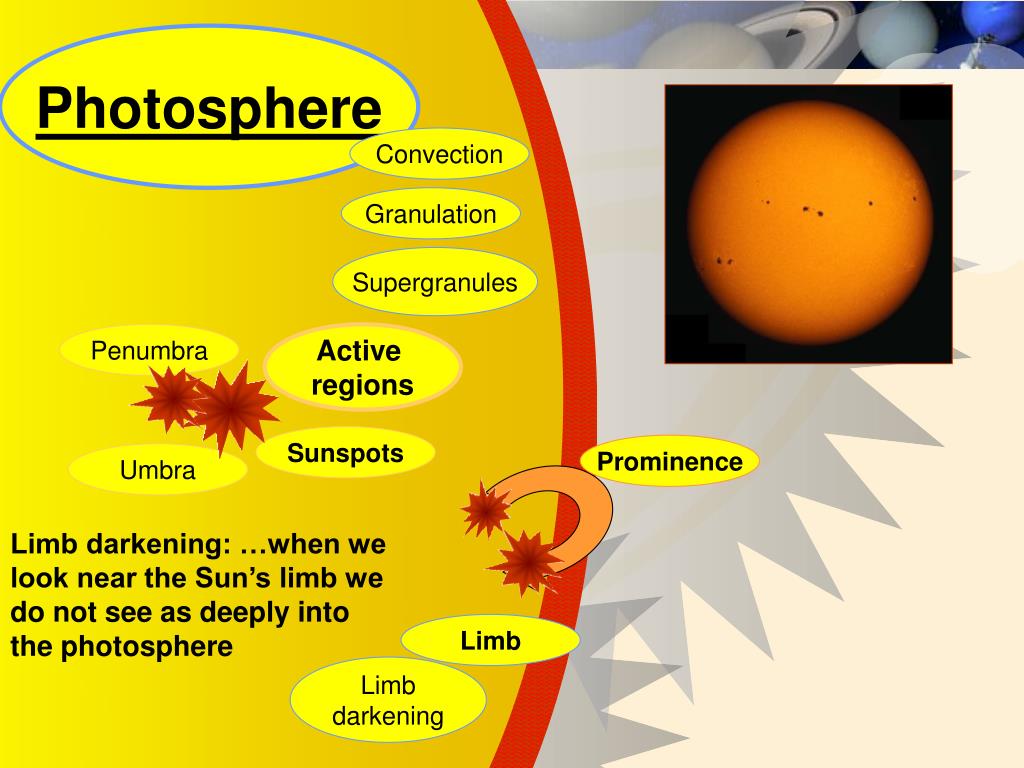

In 1996, at solar minimum, there were only eight sunspots visible during the year. This contrast makes sunspots stand out even more.

At the same time, the hot gases blocked by these sunspots flow into the areas around them, making those areas even hotter and brighter than normal. You can find the temperature of an object from the color. When we have a solar eclipse, we can see the corona: From the picture of the photosphere, we can figure out a LOT about the Sun. hotter than the photosphere observed on the photosphere travel across the surface of the Sun, while the Sun itself remains rigid and stationary usually appear in pairs or groups Because sunspots are cooler than the rest of the suns surface, they look darker. This is the photosphere, the Sun you usually see (except that you should NEVER EVER look directly at the Sun). Identify the correct descriptions of sunspots. the corona contains fewer particles and does not have as much energy as the photosphere. the photosphere has a much stronger magnetic field and is therefore brighter. However, even though they appear dark, they. Are sun spots hotter or colder than the rest of the Sun Sunspots appear dark (in visible light) because they are much cooler than the rest of the surface of the Sun. Sunspots are located on the surface (photosphere) of the Sun and can be used. Sunspots are caused by disturbances in the Sun’s magnetic field welling up to the photosphere, the Sun’s visible surface. the sunspots on the photosphere cause it to become very bright. Typically, the cooler parts are about 300 K cooler than the surroundings. The Sun's corona is much hotter than the photosphere, but it is not as bright because holes in the corona significantly reduce the brightness. Sunspots are dark regions visible in the outer layer (photosphere) of the Sun, that are cooler than. Photosphere Corona Answer Bank temperature of 1 to 2 million K normally visible surface of the Sun contains laryse holes irregular in shape location of convective cells visible during an eclips temperature of 5800 K Now, in addition to the solar granules, we see a Sunspot. Transcribed image text: Match the properties to the appropriate part of the Sun.


 0 kommentar(er)
0 kommentar(er)
